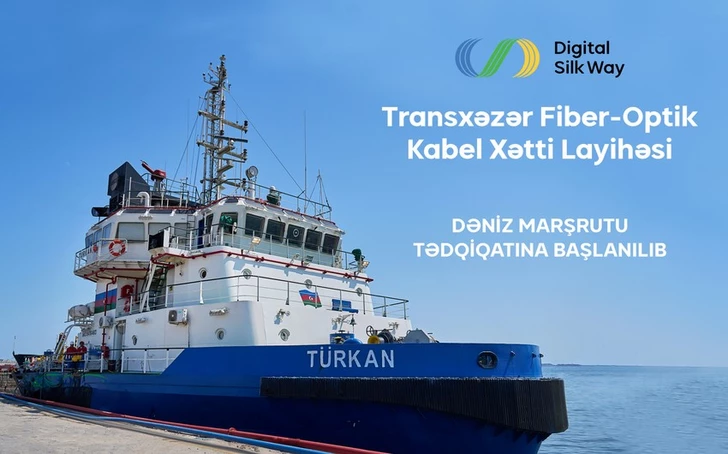Marine route surveys have begun as part of the construction of the Trans‑Caspian fiber‑optic cable line — a key element of the Digital Silk Way project aimed at creating a new digital corridor between Europe and Asia. The surveys will cover coastal area assessments and a detailed seabed study to determine the shortest, safest, and most environmentally sustainable route for this strategic initiative. Work, launched simultaneously in Azerbaijan and Kazakhstan, is expected to last up to four weeks.
Chairman of the Board of AzerTelecom Emil Masimov, together with company management, visited the Turkan vessel, where the marine research will be conducted, reviewing its technical capabilities and advanced equipment.
“Project work is progressing rapidly, and with the start of marine route surveys, we are entering a key stage of construction,” Masimov said during the visit. “This phase, which will enhance regional digital connectivity and turn the Caspian Sea into a vital element of global digital infrastructure, employs cutting‑edge technology and highly skilled specialists. I am confident that both the Azerbaijani and Kazakh teams will complete their work successfully and on schedule.”
The project will lay a 380‑kilometer underwater fiber‑optic cable between Sumgait (Azerbaijan) and Aktau (Kazakhstan) along the Caspian seabed. With a planned capacity of up to 400 Tbit/s, the line will be able to handle massive data flows.
Construction is slated for completion by the end of 2026. AzerTelecom is responsible for implementation on the Azerbaijani side, while Kazakhtelecom is managing the Kazakh segment. U.S.‑based Pioneer Consulting is providing technical supervision and advisory services.
The Trans‑Caspian cable is a critical component of the Digital Silk Way — a digital telecommunications corridor running through Azerbaijan, Georgia, Turkey, Kazakhstan, and Turkmenistan. By providing a fast, high‑capacity, low‑latency data route, the project aims to boost regional cooperation and sustainable development while creating one of the most efficient digital links between Europe and Asia.










